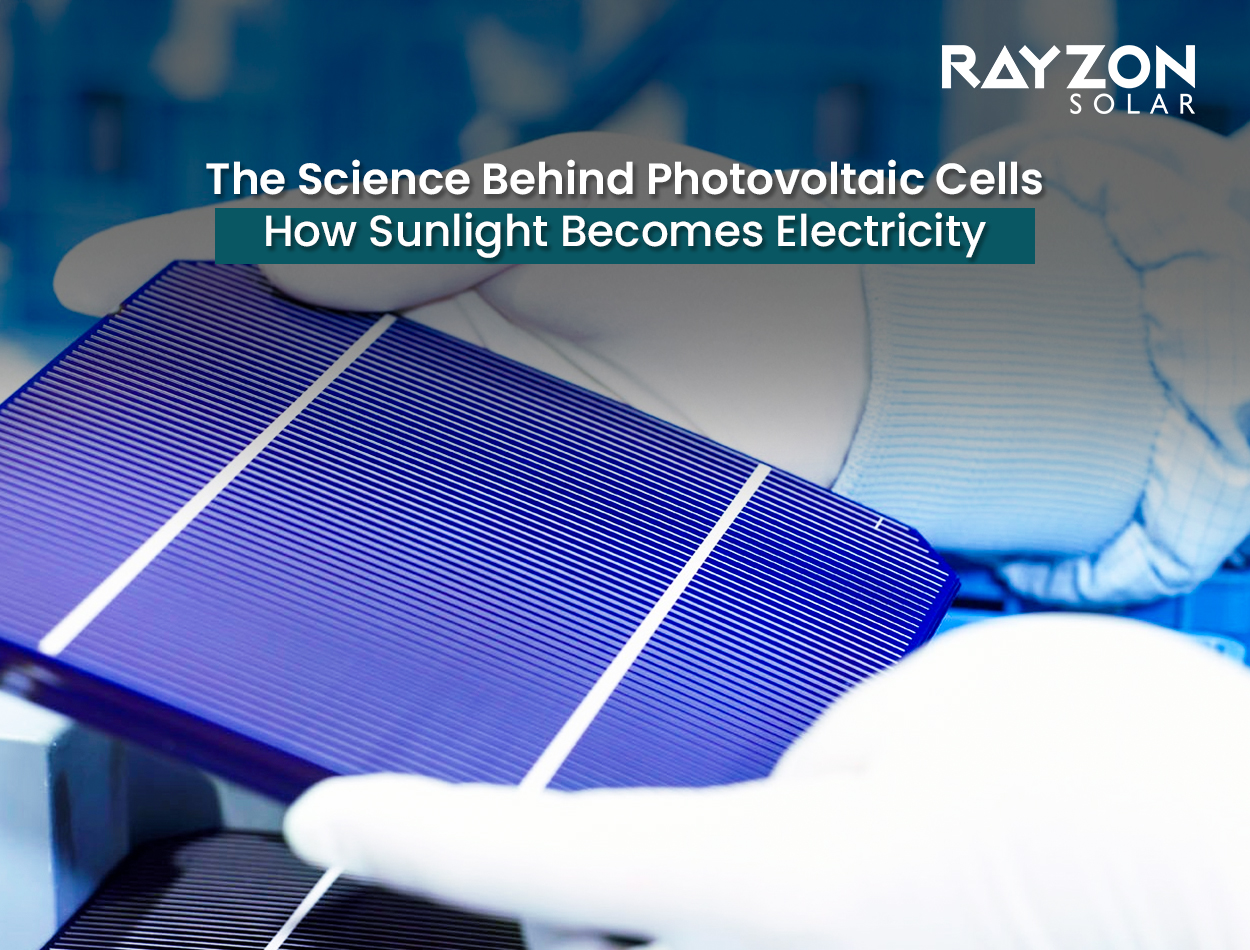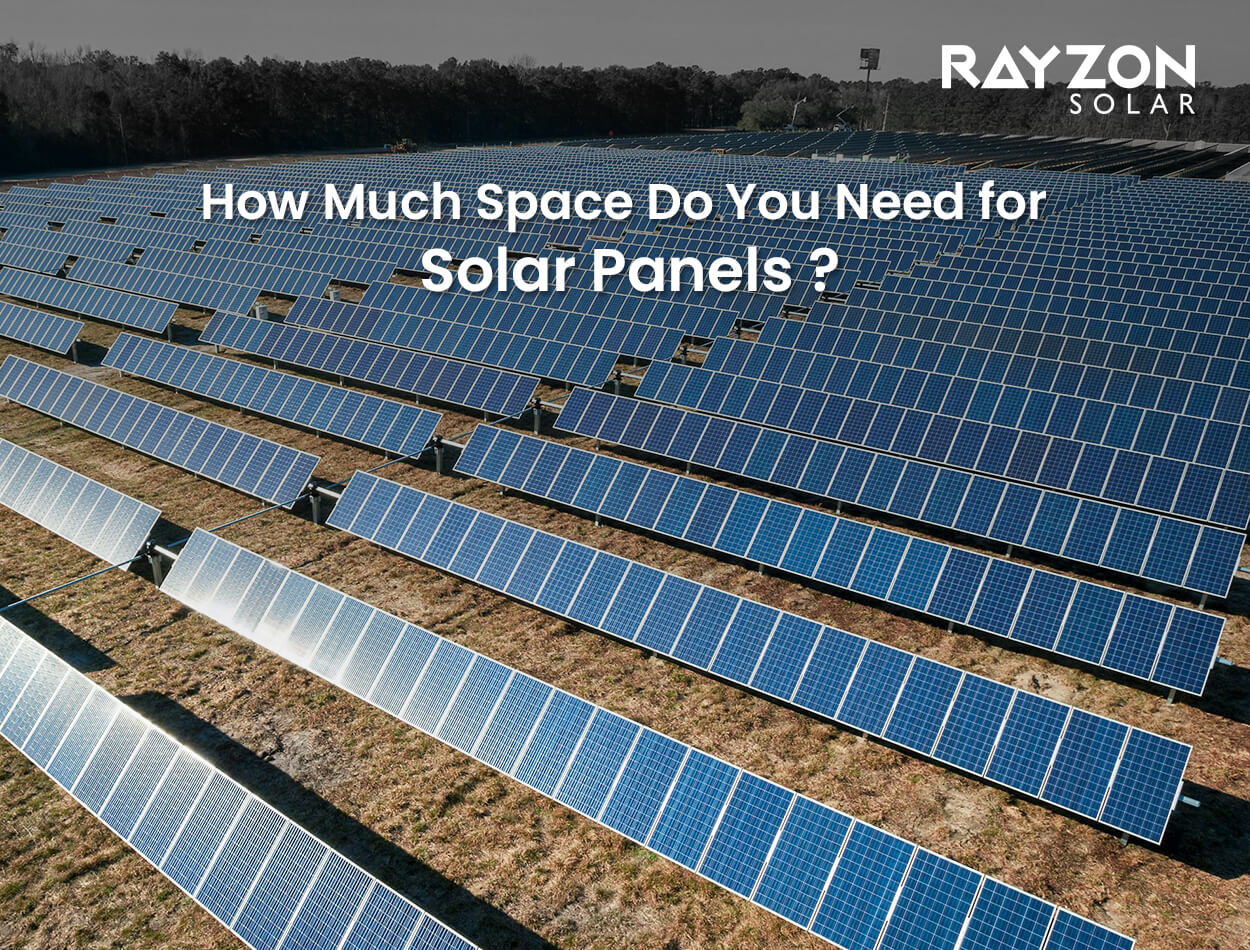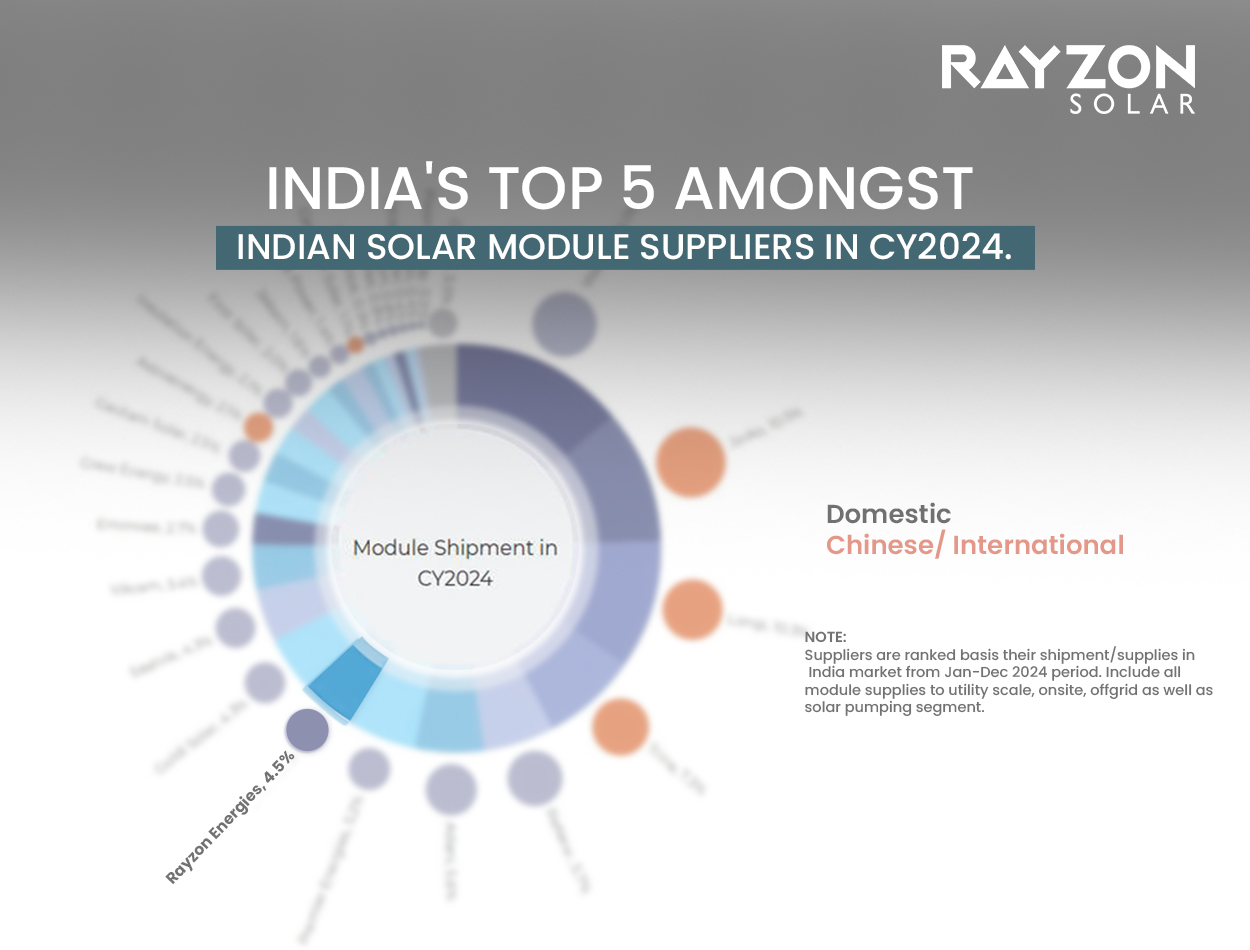
The Science Behind Photovoltaic Cells: How Sunlight Becomes Electricity
Imagine a future where the sun not only lights up your day but also powers everything around you, from your morning coffee maker to your electric car charging quietly in the driveway. Now, imagine that the future is already here.
Thanks to the advancement of solar energy technology, we no longer need to rely entirely on polluting fossil fuels or unstable power grids. Instead, we can harness one of the most abundant and renewable energy sources available: sunlight.
At the core of this clean energy movement lies a small yet incredibly powerful component known as the photovoltaic cell, also called a solar cell. These tiny cells are the fundamental units of every solar panel system you see on rooftops, highways, solar farms and even spacecraft.
So, what makes photovoltaic cells so important in the modern energy landscape?
PV cells have the remarkable ability to convert sunlight directly into electricity through a process called the photovoltaic effect. This process doesn’t require any moving parts, fuel, or emissions. It’s a silent transformation of solar radiation into usable electric power.
Over the past few decades, photovoltaic technology has evolved from a niche scientific innovation to a mainstream solution for residential solar power, commercial solar systems and utility-scale solar farms. With the world seeking sustainable alternatives, PV cells have become a cornerstone of the global transition to clean, green and renewable energy.
In this comprehensive blog, we’ll dive deep into:
- What are photovoltaic cells and how do they work?
- The science behind their energy conversion process
- The materials and structure that make them efficient
- The evolution of PV technology, from early silicon cells to modern thin-film and perovskite solutions
By the end of this article, you'll not only understand the science behind photovoltaic cells but also see why they are essential to powering a sustainable and energy-independent future.
What Are Photovoltaic Cells?
Photovoltaic cells, also known as solar cells, are the tiny energy engines behind the modern solar revolution. These are specially engineered semiconductor devices that convert sunlight directly into electricity through a process known as the photovoltaic effect.
When exposed to sunlight, each cell generates a small amount of direct current (DC) electricity. But when thousands of these cells are assembled into a solar panel, their collective power becomes enough to run anything from your home appliances to large-scale industries and power grids.
You’ve likely seen photovoltaic cells in action, whether it’s solar panels on rooftops, large solar farms stretching across fields, or even smaller panels on calculators, traffic signals and street lights. These cells are the heart of every solar energy system.
Why Are Photovoltaic Cells Important?
The significance of photovoltaic cells goes far beyond just generating power. They are at the forefront of the global shift towards sustainable, clean energy. Here’s why they matter so much:
- Clean and Renewable Energy Source
PV cells capture the sun’s natural energy, an abundant and inexhaustible resource, producing power without releasing harmful pollutants or greenhouse gases. - Reduction in Carbon Emissions
Unlike fossil fuels, photovoltaic cells do not emit carbon dioxide (CO₂) or other air pollutants. Every kilowatt-hour generated from solar helps reduce your carbon footprint. - Lower Electricity Bills
Generating your solar electricity means you rely less on grid power. Over time, this translates into significant savings on energy bills, especially with net metering and solar incentives. - Energy Independence
PV systems empower individuals, businesses and even entire nations to become more energy self-sufficient, reducing dependency on volatile fossil fuel markets. - Minimal Maintenance
With no moving parts, photovoltaic cells are incredibly durable and low-maintenance, often lasting over 25 years with minimal servicing required. - Long-Term Investment Value
Installing solar panels not only saves you money but also increases the value of your property and gives you protection against future energy price hikes.
In Simple Terms:
Photovoltaic cells are the foundational units of solar panels. They use the power of sunlight, a free, natural resource, to generate electricity safely, silently and sustainably. They are the reason why solar power is transforming how we think about energy, the environment and the future.
How Do Photovoltaic Cells Work?
Let’s break down the science into simple steps:
1. Structure and Semiconductor Materials
Semiconductors – The Heart of PV Cells
The core of a photovoltaic cell is made from semiconductors, typically crystalline silicon. This material has special electrical properties that allow it to control the flow of electricity.
P-N Junction – Creating an Electric Field
A PV cell has two layers:
- N-type silicon (doped with phosphorus) – extra electrons.
- P-type silicon (doped with boron) – creates “holes” or absence of electrons.
When these layers meet, they form a p-n junction that naturally creates an electric field. This field is critical for pushing electrons in one direction when sunlight strikes.
2. The Photovoltaic Effect
Photon Absorption
Sunlight consists of photons, tiny packets of energy. When photons hit the surface of a PV cell, their energy gets absorbed by the silicon atoms.
Generation of Electron-Hole Pairs
This energy excites electrons, knocking them loose and creating electron-hole pairs. These free electrons are ready to move.
Charge Separation and Current Generation
The electric field at the p-n junction drives the:
- Electrons → toward the n-type side
- Holes → toward the p-type side
This flow of electrons creates an electric current.
3. Collecting and Using the Electricity
To harness this electricity:
- Metal contacts collect the electrons on both sides of the cell.
- The current flows through an external circuit, delivering usable DC electricity.
- An inverter often converts this to AC (alternating current) for household use.
4. Factors That Affect PV Cell Efficiency
- Bandgap Energy: The bandgap is the minimum energy needed to excite an electron. Silicon’s bandgap is about 1.1 eV, which works well with the solar spectrum, but not perfectly.
- Anti-Reflective Coating: To ensure maximum photon absorption, a layer of anti-reflective coating reduces light loss due to reflection.
- Temperature and Quality:
- High temperatures can reduce efficiency.
- Monocrystalline silicon generally offers better efficiency than polycrystalline.
Summary Table: Key Aspects of Photovoltaic Cells
| Aspect | Description |
|---|---|
| Material | Semiconductor (usually silicon) |
| Key Structure | P-N junction (n-type and p-type layers) |
| Process | Photovoltaic effect (conversion of light to current) |
| Charge Carriers | Electrons (−) and holes (+) |
| Output | Direct current (DC) electricity |
| Efficiency Factors | Bandgap, material type, coating, temperature |
Evolution and Advancements in Photovoltaic Cell Technology
As global demand for clean energy rises, solar technology has evolved significantly beyond traditional silicon-based PV cells. Today’s photovoltaic advancements are not only more efficient but also more adaptable, durable and cost-effective. Here’s a look at the latest breakthroughs:
Thin-Film Solar Cells
Thin-film PV cells are made from materials such as cadmium telluride (CdTe) and copper indium gallium selenide (CIGS). These cells are lightweight, flexible and can be applied to curved surfaces or integrated into building materials.
Due to lower material and manufacturing costs, thin-film technology is ideal for large-area applications and portable solar devices, although their efficiency is generally lower than crystalline silicon.
Perovskite Solar Cells
Perovskite solar cells are gaining attention for their high power conversion efficiency and low production costs. They use a unique crystal structure that absorbs light more efficiently than silicon.
Although they show excellent lab performance, challenges like stability, moisture sensitivity and long-term durability still need to be overcome for commercial-scale use.
Bifacial PV Cells
Bifacial photovoltaic cells are designed to absorb sunlight from both the front and rear sides, increasing total energy output, especially in high-albedo environments like snow or reflective surfaces.
They perform exceptionally well in utility-scale solar farms where optimal installation conditions can maximize rear-side energy gain.
Tandem Solar Cells
Tandem cells layer multiple semiconductor materials with different bandgaps, allowing them to capture a broader range of the solar spectrum.
By absorbing more sunlight at varying energy levels, tandem cells can achieve efficiencies beyond the limits of single-junction cells, pushing solar performance to new heights.
TOPCon Solar Cells (Tunnel Oxide Passivated Contact)
TOPCon cells are an advanced type of crystalline silicon solar cell that use a tunnel oxide layer and a passivating contact to reduce electron recombination and boost efficiency.
They deliver higher power output and better performance under low-light and high-temperature conditions, making them a top choice for premium residential and commercial installations.
Each of these technologies brings us closer to maximizing the efficiency and affordability of solar energy. As research progresses, these innovations will play a crucial role in expanding access to sustainable energy across the world.
Real-World Applications of Photovoltaic Cells
- Residential Solar Panels: Rooftop installations to power homes.
- Solar Farms: Utility-scale projects generating megawatts of electricity.
- Solar Streetlights & Traffic Signals: Remote, self-powered systems.
- Space Satellites: PV cells power most satellites and space probes.
- Wearables and Portable Chargers: Integrated PV cells power small electronics.
Environmental and Economic Benefits
- Zero Emissions: No greenhouse gases during operation.
- Energy Independence: Reduces reliance on fossil fuels.
- Job Creation: The solar sector is one of the fastest-growing job creators.
- Cost Savings: Decreasing prices of solar installations make it more accessible than ever.
FAQs: Understanding Photovoltaic Cells Better
1. What is the lifespan of a photovoltaic cell?
Most PV cells last 25 to 30 years, with performance slowly degrading over time.
2. Can photovoltaic cells work on cloudy days?
Yes, though with reduced efficiency. Modern panels can still generate electricity from diffused sunlight.
3. Do PV cells store electricity?
No. They generate electricity. Storage requires a solar battery system.
4. What’s the difference between PV cells and solar thermal?
• PV cells generate electricity.
• Solar thermal systems use sunlight to heat water or air.
Conclusion: The Sun-Powered Future is Here
Photovoltaic cells represent one of humanity’s greatest achievements, turning pure sunlight into usable electricity with no noise, no emissions and minimal maintenance. As research continues to evolve, the efficiency, durability and affordability of PV cells will only improve.
Whether you're powering your home, your office, or an entire city, the science behind photovoltaic cells proves that a clean energy future is not only possible, it's already happening.



